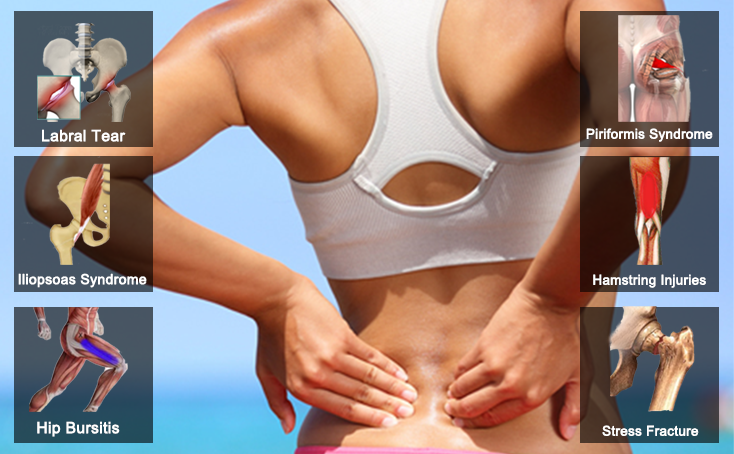
DAVE WATTS, MD
Orthopedic Surgeon
Common Injuries Responsible for Hip Pain

Hip pain is the most difficult to diagnose. There are several reasons possibly responsible for the hip pain. The ball-in-socket joint structure makes the hip joint susceptible to injuries like running. The complex joint supporting structure can have different sources of pain. The critical role of the hip in stabilizing human body makes it an important joint to identify and resolve the underlying cause quickly.
Let us look at the common reasons for hip joint pain.
Labral Tear
The hip labrum forms a cartilage ring to lubricate O-ring surrounding the ball of the femur. Bone related abnormalities can sometimes lead to the labrum becoming impinged. It results in limiting the normal motion functions of the hip joint. The impingement eventually leads to fray labrum and tear. Earlier, labral tears were not considered to have a bad impact over the long term. However, now medical experts consider them an early development towards the development of hip arthritis.
Hip Bursitis
Hip bursa plays a pivotal role in facilitating a range of the hip joint motions in different directions. Sometimes, the hip bursa sac can get inflamed, causing pain and symptoms related to outer side of the hip radiating down the thigh. In most cases, hip bursa inflammation treatment is similar to bursitis of other types. The patient is asked to take rest, apply ice, and use anti-inflammation medicines. The severe hip bursitis cases can also require surgery.
Iliopsoas Syndrome
The iliopsoas muscle goes from the top of the hip joint right down to the knee, helping pull it up and down. Iliopsoas bursa facilities the upper leg movement. The inflammation of the bursa or tendon can cause pain and result in clicking or snapping sensation. The problem arises because of the sudden changes in lifestyle. An active lifestyle helps reduce the risk of having iliopsoas syndrome. However, patients diagnosed with iliopsoas syndrome must take rest and use a doctor-recommended dosage of anti-inflammatory medications.
Piriformis Syndrome
Piriformis is a small muscle running from sacrum to outside of the hip. This little muscle can sometimes have significant problems due to overuse or inflammation. The muscle runs over the sciatic nerve. When the piriformis puts pressure on the sciatic nerve, it causes extreme pain for the patient in the posterior hip area, resulting in swelling and spasms. The orthopedic doctor usually addresses mechanical problems related to the piriformis syndrome. The doctor usually advises exercises to the patient to overcome piriformis syndrome.
Hamstring Injuries
There are there different muscles forming the hamstrings, running down to the back of the thigh. These muscles work together to create knee flexors. The tearing of fibers within muscle causes the hamstring injury. The severity of the hip injury is dependent on the extent of tear and amount of damage done. The strain is the least severe form of a hamstring injury. Most of the hamstring injuries are linked to back pain in the leg, particularly when it gets worse. However, if the injury is higher up, this symbolizes the symptoms to be originating from the hip area.
Stress Fracture
A stress fracture is not as common in the case of the hip as for hip and foot. Stress fractures can occur in the hip. There are several reasons which can cause a hip stress fracture. The muscle fatigue can cause stress fracture of the hip. Sometimes, predisposed anatomical issues can result in a stress fracture. During running or other physical activities, muscles and tendons absorb forces transmitted during ground striking. But, progressive fatigue can transfer to the underlying bone, causing it to fracture.